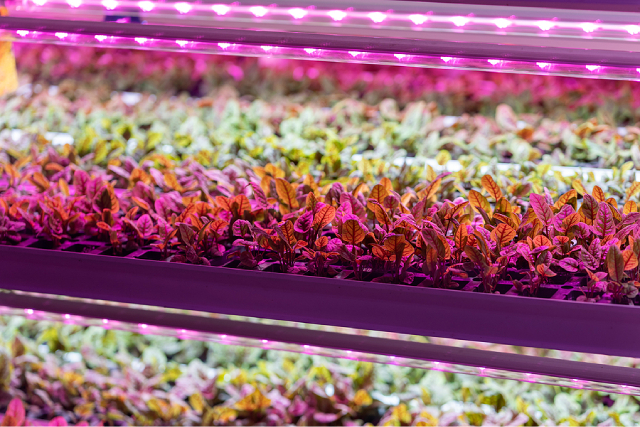
16 Oct Boost Microgreens Growth: 5 Hydroponic Best Practices
Despite their small size, microgreens pack a powerful punch of nutrients, making them a fantastic addition to your diet. These tiny greens are loaded with vitamins, minerals, and antioxidants, helping to boost your immune system, improve digestion, and even reduce the risk of chronic diseases. Whether you’re sprinkling them on salads, blending them into smoothies, or garnishing your favourite dishes, microgreens add not only a burst of flavour but also a significant health boost.
Growing microgreens at home, particularly using a hydroponic system, has become increasingly popular. Hydroponics is a soil-free method of growing plants that uses nutrient-rich water to nourish your crops. This method is especially beneficial for microgreens because it allows for faster growth, higher yields, and better control over the growing environment. Plus, growing microgreens hydroponically means you can do it indoors, no matter the season, ensuring you have a fresh supply of greens all year round. Additionally, hydroponic farming on the environment has a positive impact, as it typically uses less water and reduces the need for pesticides and herbicides compared to traditional farming methods.
Here are five essential best practices to help you grow vibrant, nutrient-rich microgreens using hydroponics.
1. Choose the right hydroponic system
The first step to successful microgreen growth is selecting the right hydroponic system. There are several types of systems available, but not all are ideal for microgreens. For beginners, a simple tray system works best. These systems are easy to set up and maintain, making them perfect for those new to hydroponics. Look for a system that includes a shallow tray with a wicking mat or a flood-and-drain mechanism to keep the microgreens hydrated without over-saturating them.
If you’re in Singapore and looking to start your hydroponic journey, consider exploring options to buy a hydroponic system in Singapore that meets your needs. The right system will be a game-changer, making the growing process smoother and more efficient.
2. Select high-quality seeds
Not all seeds are created equal, especially when it comes to microgreens. To ensure a lush, healthy crop, it’s crucial to use high-quality, untreated seeds specifically labelled for microgreen production. These seeds are often tested for pathogens and have a higher germination rate, leading to more uniform growth.
When selecting seeds, consider the type of microgreens you want to grow. Popular choices include radish, broccoli, arugula, and basil, each offering a unique flavour and nutrient profile. Make sure to source your seeds from a reputable supplier to avoid issues like poor germination or disease.
3. Maintain optimal growing conditions
Microgreens thrive in specific conditions, and maintaining these is key to a successful harvest. Start by placing your hydroponic system in a location with adequate light. While natural sunlight is ideal, many indoor growers use LED grow lights to ensure their microgreens get the necessary light spectrum for photosynthesis. Aim for 12 to 16 hours of light per day to promote robust growth.
Temperature and humidity are also critical factors. Microgreens typically prefer temperatures between 18°C and 24°C (65°F to 75°F) and humidity levels around 40 to 60%. Too much heat or humidity can lead to issues like mould, while too little can stunt growth. Using a thermometer and hygrometer to monitor these conditions can help you make adjustments as needed.
4. Use the right nutrient solution
Since hydroponics relies on water rather than soil, providing the right nutrient solution is vital for your microgreens’ health. This solution should contain a balanced mix of macro and micronutrients, including nitrogen, phosphorus, potassium, calcium, and magnesium. These nutrients support various stages of plant growth, from root development to leaf production.
It’s important to follow the manufacturer’s instructions when mixing your nutrient solution. Over-fertilising can burn the delicate roots of microgreens, while under-fertilising can lead to weak, nutrient-deficient plants. Regularly check the pH level of the water, aiming for a slightly acidic range of 5.5 to 6.5, which is ideal for nutrient absorption.
5. Practise proper harvesting techniques
When it comes time to harvest your microgreens, the process is simple, but proper technique is crucial for the best results. Most microgreens are ready to harvest within 7 to 14 days after germination, once they have developed their first true leaves. To harvest, use a sharp pair of scissors or a knife to cut the microgreens just above the root line. Avoid pulling the plants out by the roots, as this can disrupt the growing medium and potentially contaminate the next batch.
After harvesting, rinse your microgreens thoroughly under cold water and let them dry completely before storing them in the refrigerator. Properly stored microgreens can last up to a week, although they’re best enjoyed fresh.
Conclusion
Growing microgreens hydroponically is a rewarding experience that yields nutritious, flavourful greens right in your home. By following these five best practices, you can ensure a successful and bountiful microgreen harvest.
Ready to take your microgreen growing to the next level? Vicplas offers a wide range of gutters, quality channels, and trays that are sustainable and safe for agricultural use, helping you create the perfect hydroponic setup for your needs. Start your hydroponic journey today and enjoy the benefits of fresh, home-grown microgreens year-round!
